SPAIN
Nerja

Nerja
Nerja
Nerja is a place and a municipality on the Spanish Costa del Sol (Coast of the Sun) in the hottest region of Europe: Andalusia. Nerja was a quiet fishing town in the past. Nowadays, Nerja attracts many tourists every year with its beautiful beaches, pleasant climate and green nature. Nerja is also home to one of Spain's most visited attractions: the Nerja Caves.
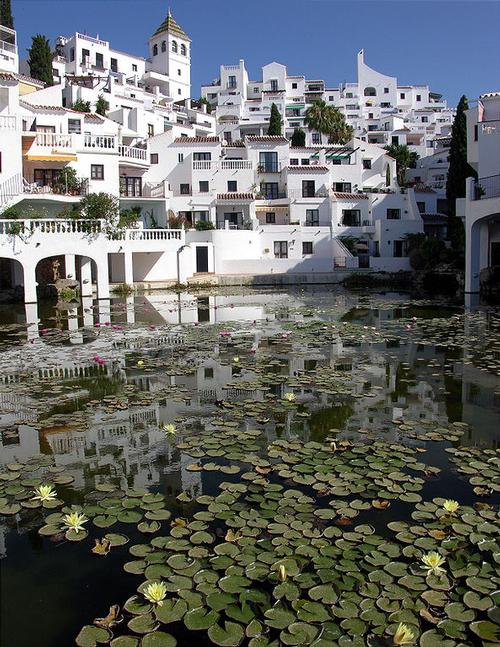 NerjaPhoto: Peter Lorber CC 2.5 Generic no changes made
NerjaPhoto: Peter Lorber CC 2.5 Generic no changes made
Nerja is located in the south of Spain in the eastern point of the Costa del Sol and has an area of 85 km². Around 25,000 people live in the place. The town and the municipality of Nerja belong to the province of Màlaga, but are located on the border with the province of Granada. The fishing village is located on the Mediterranean.
Weather
The town of Nerja is located on the easternmost end of the Costa del Sol in the province of Malaga. The climate of Nerja is positively influenced by the protection that the Sierra Nevada offers. The mountain range, which lies about two kilometers inland, ensures that the Mediterranean climate of Nerja is not disturbed. Winters are mild and pleasant, making a holiday in Nerja even then enjoyable. Nerja has about 200 sunny days per year.
History
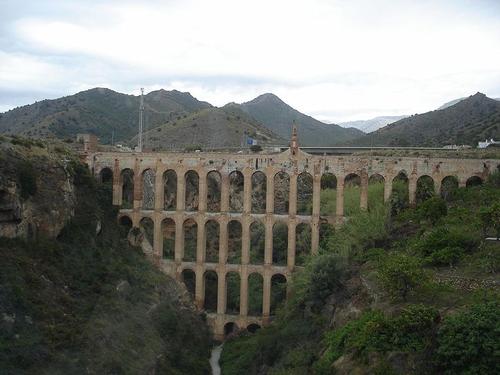 Aquaduct NerjaPhoto: Jean-Claude Perez CC 2.0 France no changes made
Aquaduct NerjaPhoto: Jean-Claude Perez CC 2.0 France no changes made
In the caves of Nerja, remains of Stone Age habitation, about 30,000 years ago, have been found. Remains of an old road have been found from the Romans. The Romans called the city Detunda. Archaeologists have also discovered ancient Roman coins and pottery and a burial ground. After the Romans came the Moors, who occupied the city until the 15th century. In 1509 the 'castle on the rock' (now known as Balcon de Europa) was built. At the beginning of the 18th century, Nerja had 7,500 inhabitants. After the Spanish Civil War, cooperatives were established to exploit the production of sugar and sugar cane and honey. The discovery of the Nerja Caves in the late 1950s put Nerja on the tourist map as a popular tourist resort. Nerja now has a population of about 25,000, of which about 25% are foreigners.
Sights
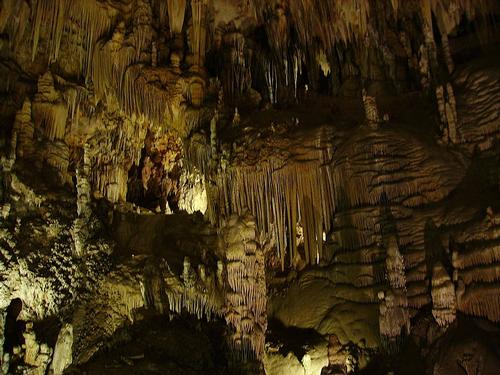 Nerja CavesPhoto: Luzzyacentillo CC 3.0 Unported no changes made
Nerja CavesPhoto: Luzzyacentillo CC 3.0 Unported no changes made
The Cueva de Nerja, a stalactite cave near the center of Nerja, is one of Spain's most visited cultural sites. The cave, which dates back to the Paleolithic era, features stalactites and stalagmites. With a tunnel system of 5 kilometers, it is one of the largest caves in Europe. A stalactite of no less than 32 meters of lenght has even been found in the cave.
The cave was accidentally discovered in 1959 by a group of playing children. In the cave skeletons, tools, earthenware bowls and murals representing fish and other animals have been found. After research it was found that the cave had been used since prehistoric times. The cave served, among other things, as a shelter and as a cemetery. In 1960 the dripstone cave was opened to the public and since then it has grown into a gigantic tourist attraction.
At the entrance of the Cueva de Nerja you can visit a small archaeological museum. Here you can view the finds found in the cave. Since the opening of the cave, a music and dance festival have been organized in the Cueva de Nerja every July.
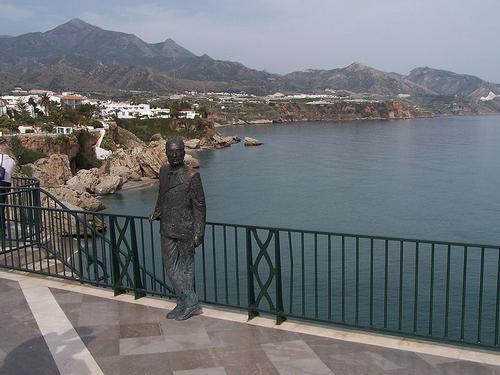 Balcon de Europa NerjaPhoto: Delbarre Cédric in het publieke domein
Balcon de Europa NerjaPhoto: Delbarre Cédric in het publieke domein
Nerja is also known for the Balcón de Europa. This is a boulevard in the center of the town built on a rock in the Mediterranean Sea at a height of 23 meters. The original boulevard was built in 1487 and has been restored several times since then. It is always very busy here. The painters, musicians and other artists who entertain the tourists on the balcony of Europe make the whole look somewhat like the Ramblas of Barcelona. A ninth-century castle used to belong to the Balcón, but it was already demolished in 1812.
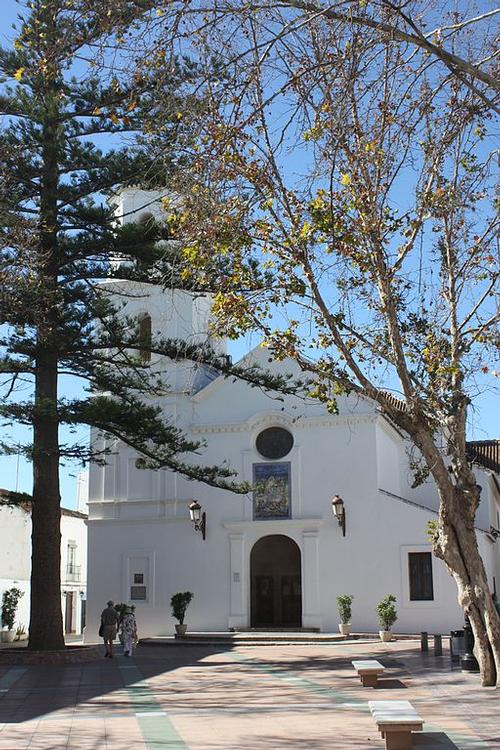 Church El Salvador NerjaPhoto: Dguendel CC 3.0 Unported no changes made
Church El Salvador NerjaPhoto: Dguendel CC 3.0 Unported no changes made
At one end of the Balcòn de Europa is a beautiful square with the baroque El Salvador church. The construction of this church, under the direction of Juan Lechuga, was completed in 1697. In the church you can find beautiful frescoes.
Tips
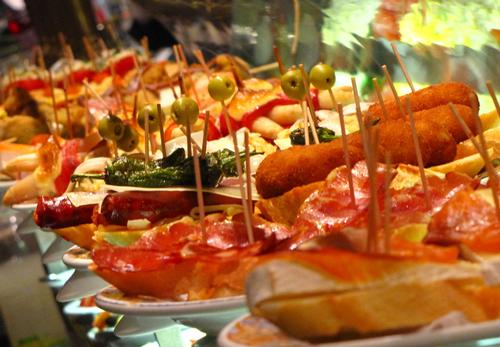 Tapas NerjaPhoto: José Porras CC 3.0 Unported no changes made
Tapas NerjaPhoto: José Porras CC 3.0 Unported no changes made
There are many tapas bars in Nerja, where you can eat the best authentic Spanish snacks. Especially in the center of Nerja there is a nice restaurant for every eater. Tapas are Spanish snacks that are eaten with an aperitif. In the past, Spanish cafes used to put lids on the glasses to protect the glasses against flies and other vermin. To make these lids a bit more fun, people started making small snacks on them. This soon developed into a trend in Spanish cuisine: tapas. Well-known tapas are Patatas Bravas (potatoes in spicy sauce), garlic mushrooms and tortillas (omelets). Today in most cafes in Nerja you still get tapas with your drink.
In the evenings, artists often perform in the bars and cafes of Nerja. This way you can regularly admire Spanish guitarists. Parque Verano Azul also regularly hosts concerts during the summer. The Plaza Tutti Frutti is the square where people gather in Nerja from about eleven o'clock before going out. Here you will find several bars, discos and cafes. In the Calle Antonia Million near the Plaza Tutti Frutti you will also find a number of pleasant entertainment options. In the summer months, all clubs and discos are open seven days a week until late at night.
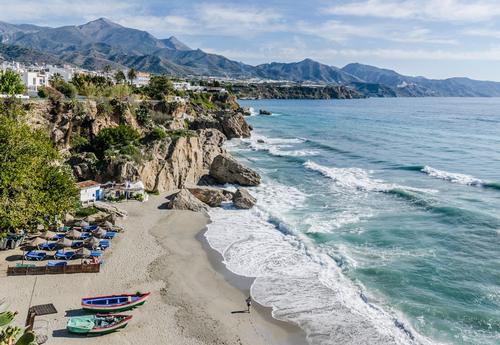 Nerja BeachPhoto:Tuxyso CC 3.0 Unported no changes made
Nerja BeachPhoto:Tuxyso CC 3.0 Unported no changes made
Nerja has thirteen beaches with a total length of 16 kilometers. Burriana and Torrecilla beaches are among the most beautiful in Spain. Furthermore, there are several picturesque, rocky bays where it is usually wonderfully quiet.
Useful links Nerja
BBC Country ProfilesWorld Fact Book Explore all Countries
How to call
Last updated December 2025
Copyright: Team - The World of Info